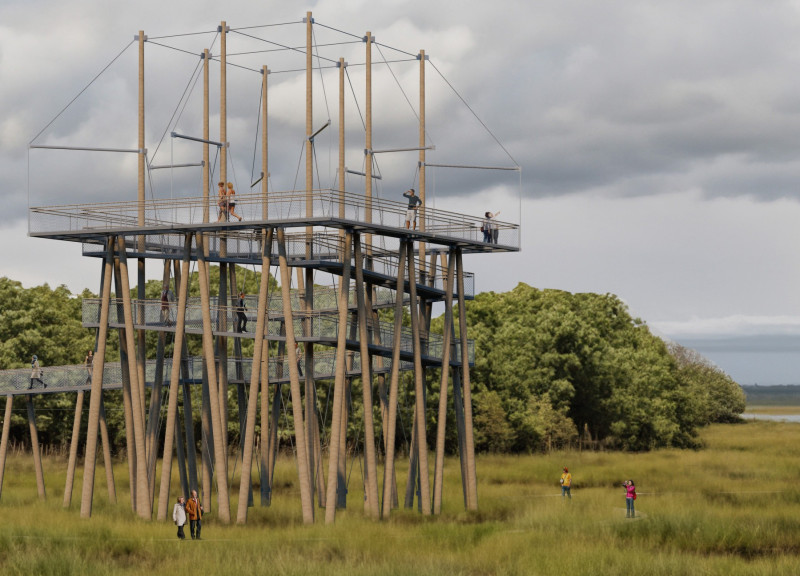5 key facts about this project
Designing the project with a clear intention to minimize its ecological footprint, the Observation Tower employs locally sourced materials, ensuring that its impact on the land is both responsible and reflective of the surrounding environment. The structure includes elements such as yellow pine power poles and steel columns, which provide necessary support while promoting sustainability through their local sourcing. The stainless steel cable mesh used for safety railings offers durability and transparency, allowing for unobstructed views without compromising safety.
Unique to this project is the innovative use of pathways that facilitate accessibility while promoting exploration of the natural habitat. The spiral ramp design not only ensures compliance with ADA standards but also invites a gradual ascent, enhancing the visitor's connection to the landscape. Each step upward provides a shifting perspective, encouraging appreciation for the ecological features of the site.
The architectural design prioritizes ecological considerations throughout, incorporating a pollinator zone and wetland gardens that highlight local biodiversity. These elements serve educational purposes, immersing visitors in the importance of environmental stewardship. The woodland zone helps foster habitats for local bird species, further integrating the built environment with its natural context.
Reviewing the architectural plans and sections of this project can provide deeper insights into the design solutions employed, showcasing how thoughtful architecture can coexist with and enhance natural landscapes. The Observation Tower stands as a testament to the potential of architectural design to facilitate interaction with the environment while promoting accessibility and sustainability. For additional details, exploration of the architectural designs and ideas behind this project is encouraged.


























